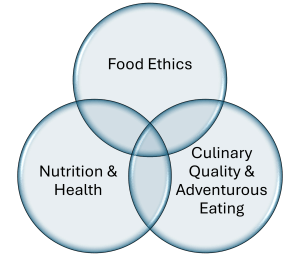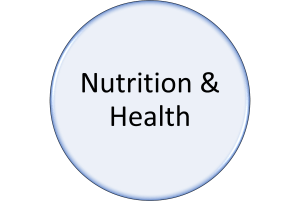

Food motivations for hunting and angling…
 In the Food Ethics sphere, our work expands upon the following observations:
In the Food Ethics sphere, our work expands upon the following observations:
- Consumers want to “know where their food comes from” and to be assured that their protein “had a high quality of life” before becoming food.
- Consumers express interest in having evidence of (seeing) their food sources existing in perceived “natural” environments.
- Food security for indigenous people – this needs to evolve beyond ad hoc philanthropy.
- Contribution of meat to local economies needs to be measured and tracked.
- There is a growing call for more thought around legal and regulated hunting for indigenous people, in the Food Ethics/Food Security context.
Research Papers

In the Nutrition & Health sphere, we are after empirical data and analysis. There are two main components here.
1. Nutritional content of game meat. Requires nutrition scientific studies completed for every species hunted and consumed.
2. Health and wellness components. Includes actual physical exercise as well as psychological and holistic health benefits of the pursuit of food via hunting and angling.
Research Papers

In the Culinary Quality and Adventurous Eating sphere we acknowledge and are curious about the fact that a growing number of outdoor recreation media “shows” focus on the food component of hunting in the United States, and that this “Leveraging of the Locavore” movement is occurring throughout the world.
Research Papers
Tidball, KG and M. M. Tidball. 2022. Locally Procured Wild Game Culinary Trends in the US: A Study of the Ruffed Grouse as Entrée and Accompanying Nutritional Analysis. Frontiers in Sustainable Food Systems.
Stedman, C., L. Larson, K.G. Tidball, M. Tidball, & P. Curtis. 2017. Hunting and the Local Food Movement: Insights from Central New York State. Wildlife Society Bulletin.
Tidball, M., Exler, J., Somanchi M., Williams, J., Kraft, C., Curtis, P., Tidball, K. 2017. Addressing information gaps in wild-caught foods in the US: Brook trout nutritional analysis for inclusion into the USDA national nutrient database for standard reference. Journal of Food Composition and Analysis.
Tidball, M., KG Tidball, and P. Curtis. 2014. The Absence of Wild Game and Fish Species from the USDA National Nutrient Database for Standard Reference: Addressing Information Gaps in Wild Caught Foods. Ecology of Food and Nutrition, 53:1-7, p. 142-148.
Tidball, KG, M. Tidball and P. Curtis. 2013. Extending the Locavore Movement to Wild Fish and Game: The Seneca Wild Harvest Table Extension Program. Journal of Natural Resources and Life Sciences Education, Vol. 42 No. 1, p. 185-189.
Presentations